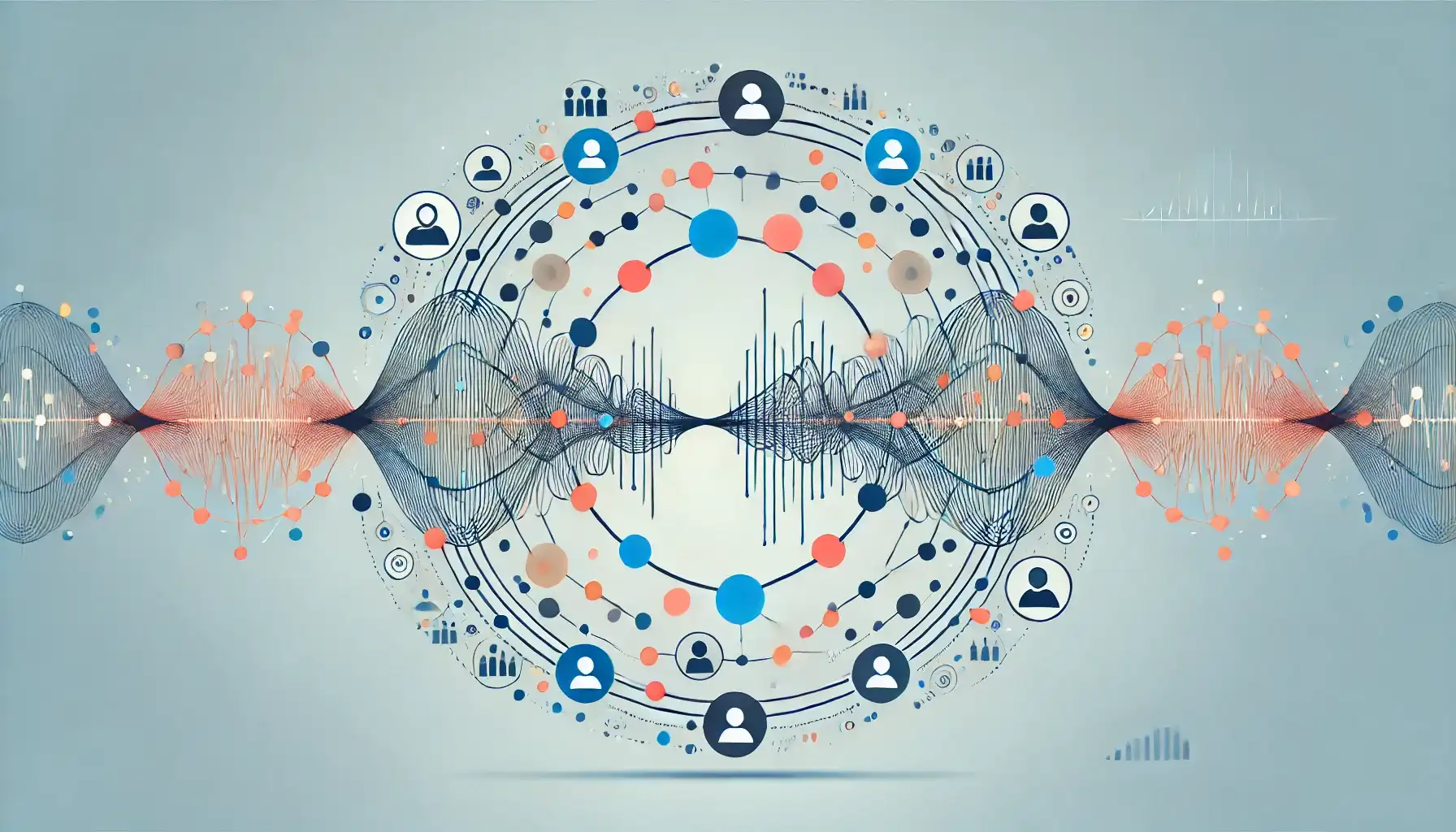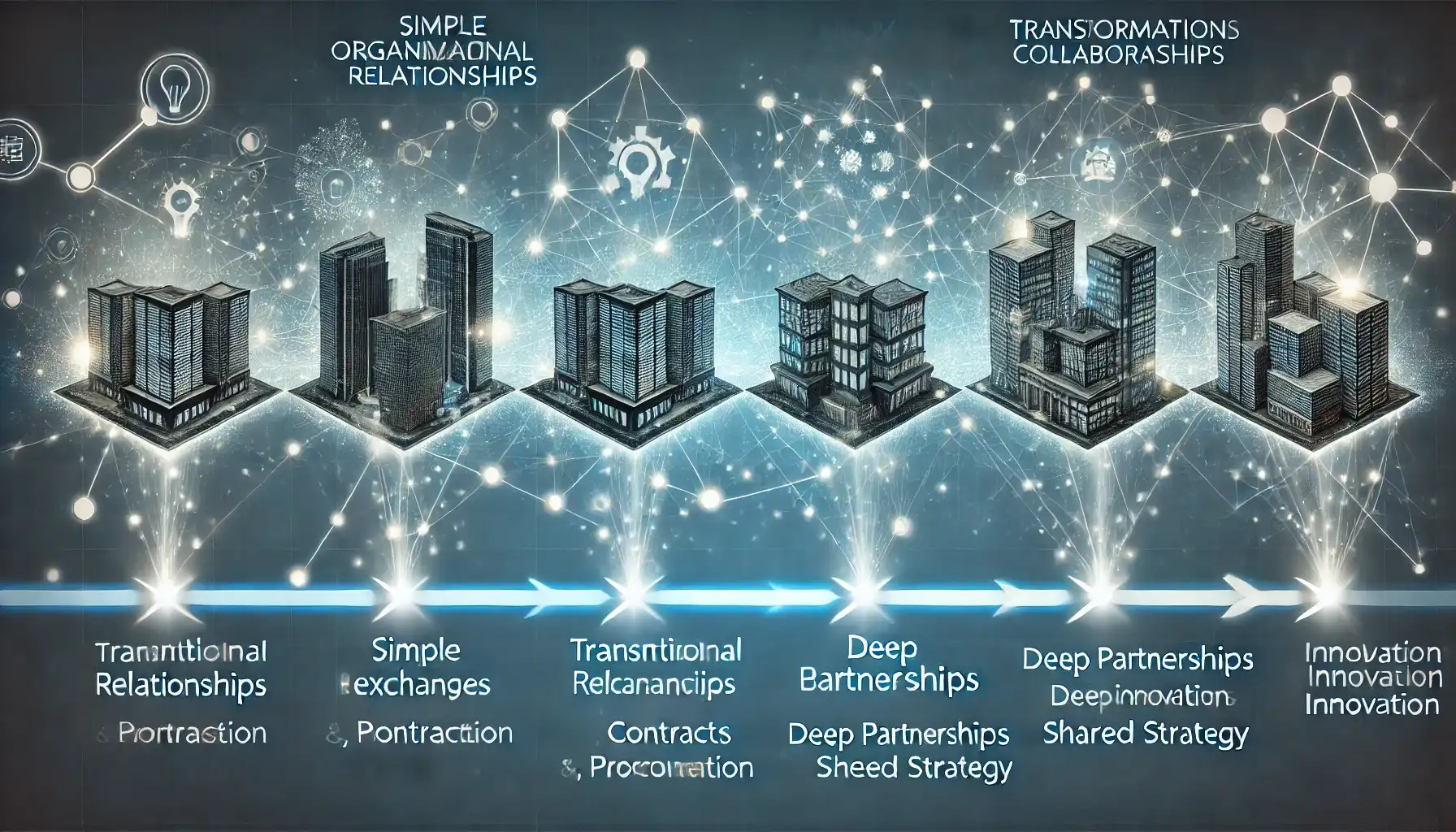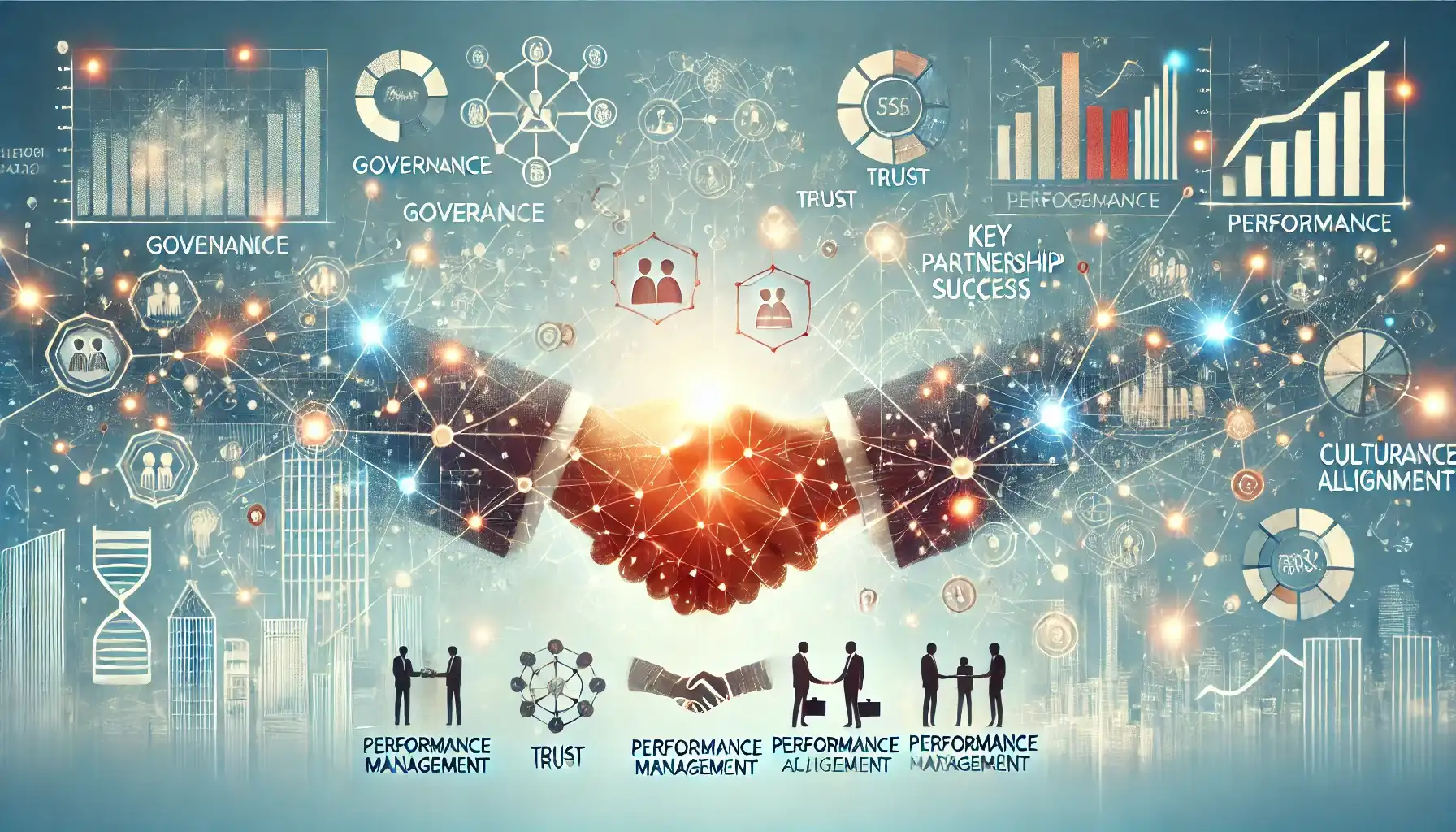If you look closely at how successful teams actually work, you'll notice something surprising: collaboration doesn't flow like a steady stream but pulses like a heartbeat—intense periods of synchronous interaction followed by quieter stretches of independent work and occasional asynchronous exchanges.
This pattern isn't a quirk or inefficiency in our collaborative processes. It appears consistently across different industries and project types. Understanding this natural rhythm isn't just an interesting observation; it's a critical insight for organizations seeking to optimize how their teams work together in an increasingly distributed and digital business environment.
The Natural Rhythm of Business Communication
Think of the last major project you contributed to. Did the team maintain the same level of interaction throughout, or did you notice periods when communication intensified—perhaps around kickoff meetings, major milestones, or approaching deadlines—followed by quieter periods of heads-down work? This pulsing pattern of collaboration—which researchers sometimes call "bursty communication"—emerges across industries, organizational structures, and collaborative contexts.
During peak periods, teams converge with urgency and focus. Ideas flow rapidly, decisions get made, priorities align, and energy builds upon itself in ways that simply aren't possible through disconnected exchanges. These moments of synchronicity create shared understanding and momentum that propel projects forward.
Then comes the quiet period—when individuals retreat to their domains, processing information, working independently on their pieces of the puzzle, and occasionally exchanging updates through asynchronous channels (see Exhibit 1.). These periods aren't "downtime" in the collaborative process; they're essential for deep work, reflection, and the specialized contributions that each team member brings to the table.
Exhibit 1: The Collaborative Heartbeat - Periods of Intense Synchronous Interaction Alternating with Quieter Asynchronous Exchanges
This rhythm honors dual needs: our social nature that thrives on rich interaction and our cognitive need for focused attention without constant interruption. But how does this pattern manifest in various business contexts? And how does it manifest in various collaborative scenarios?
The Product Launch: Cross-Functional Collaboration
Consider Meridian Software, a mid-sized company preparing to launch RevConnect, a new customer relationship management tool designed specifically for renewable energy companies. The project brings together engineers, product managers, marketers, sales representatives, and customer support specialists—each with their unique expertise and priorities.
The collaboration begins with a three-day intensive workshop. In a conference room filled with whiteboard sketches and sticky notes, engineers debate technical architecture while product managers advocate for feature priorities. Marketing specialists share competitive research, while sales representatives recount customer pain points from their recent conversations. The energy is palpable—ideas building upon ideas, challenges raised and addressed in real-time, and decisions made with all perspectives in the room.
Why this intensity? Because establishing shared understanding requires synchronized mental models—something that happens most effectively when people are fully present and engaged in real-time conversation. The product manager can see the slight hesitation on the engineer's face when discussing a particular feature timeline, prompting a deeper discussion about technical challenges that might never have surfaced in an email exchange.
After this burst of activity, the teams disperse. Engineers begin building the core functionality, working in two-week sprints. Product managers refine specifications and user stories. Marketing develops messaging frameworks and begins planning launch activities. During this quieter phase, communication doesn't stop—it transforms. It becomes more deliberate, focused on specific questions or updates.
An engineer emails the product manager about an ambiguity in a feature specification. The marketing team shares draft messaging concepts in a document for asynchronous feedback. The customer support lead prepares training materials, occasionally checking in with product management to verify details.
Six weeks later, as the first major development milestone approaches, the collaboration intensifies again. Teams reconvene for two days of prototype reviews, integration testing, and refinement discussions. The burst of synchronous activity resolves emerging issues and realigns expectations before teams return to their focused work.
As the launch date approaches, the pattern repeats—periods of intense collaboration around beta testing, marketing reviews, sales enablement, and go-to-market planning, each followed by quieter periods of execution and refinement. Throughout the process, the rhythm of collaboration follows the natural cadence of the project's needs—intense when alignment and complex problem-solving are required, quieter when specialized execution takes priority.
The Strategic Alliance: Cross-Company Collaboration
Now imagine MediTech, a healthcare equipment manufacturer, partnering with AlgorithmX, a software company specializing in artificial intelligence, to develop an AI-powered diagnostic tool for early detection of cardiovascular conditions. This collaboration crosses organizational boundaries, introducing additional complexity to the communication patterns.
The partnership begins with a week-long series of alignment meetings at MediTech's headquarters. Senior leadership from both companies outline strategic objectives. Legal teams negotiate intellectual property terms. Technical teams from both organizations work through integration challenges between MediTech's imaging hardware and AlgorithmX's machine learning algorithms.
These sessions aren't just about exchanging information—they're about building the foundation of trust and shared understanding that will sustain the partnership through inevitable challenges. When AlgorithmX's head of data science expresses concerns about the quality of imaging data needed for their algorithms, MediTech's lead engineer can immediately demonstrate the capabilities of their newest sensors, resolving a potential roadblock that could have taken weeks to address through email exchanges.
The intensity of these sessions stems from the need to overcome organizational barriers. Different company cultures, terminologies, priorities, and processes must be reconciled—a process that demands focused, synchronized attention. Face-to-face interactions allow participants to read subtle cues, address misunderstandings immediately, and build personal connections that facilitate future collaboration.
Following these intense sessions, teams return to their respective organizations. MediTech's hardware engineers begin adapting their imaging equipment with the new specifications in mind. AlgorithmX's data scientists start developing and training the detection algorithms using sample data provided by MediTech. Communication during this phase becomes more structured and formal—bi-weekly status reports, documented decision requests, and scheduled check-in calls between team leads.
Why this formality? Because cross-company collaboration lacks the informal channels that naturally exist within organizations. Without shared office spaces, hallway conversations, or internal communication platforms, teams need more explicit mechanisms to stay connected during the quieter periods. The project managers from both companies recognize this challenge, establishing clear protocols for how and when information should flow between organizations.
Three months into development, as the first integration milestone approaches, the partners reconvene for a four-day technical workshop. Hardware and software teams work side-by-side, testing early versions of the integrated solution, troubleshooting interface issues, and refining the approach based on initial results. Again, the pulse of activity intensifies as real-time collaboration becomes essential for solving complex interdependencies that weren't fully visible during the planning phases.
Throughout the 15-month development cycle, this rhythm continues—periods of intense, co-located collaboration around major milestones, followed by longer stretches of parallel work with more formalized communication. The pattern adapts to the needs of each phase, with more frequent pulses of activity during initial design and final integration testing, and longer quiet periods during core development work.
The Professional Services Scenario: Client Support Collaboration
When Northeast Financial, a regional banking network serving three states, experiences unexplained intermittent outages across their transaction processing systems, they activate their support agreement with Ciscon Network Inc. What follows illustrates our collaborative rhythm in a crisis-driven context.
The initial response involves an intense burst of activity—a virtual war room forms within an hour of the critical alert, bringing together Ciscon's network specialists and Northeast's IT security and infrastructure teams. They engage in rapid-fire diagnostics, sharing logs, testing scenarios, and exploring potential causes—from misconfigured routing equipment to possible security breaches.
This high-intensity period lasts nearly 20 hours, with core team members working through the night. The synchronous nature of the interaction proves crucial—when a Ciscon engineer notices an unusual pattern in the authentication logs, Northeast's security lead can immediately provide context about recent changes to their identity management system, leading to the discovery of a configuration issue creating cascading failures during peak transaction periods.
Why this intensity? Because network downtime directly impacts business operations—in this case, preventing customers from completing transactions and potentially damaging the financial institution's reputation. The urgency creates a need for immediate, focused attention from all parties. The real-time interaction allows for rapid hypothesis testing and course correction based on immediate feedback that would be impossible through disconnected exchanges.
Once the immediate crisis is addressed with a temporary fix, the collaboration enters a quieter phase. Ciscon's team analyzes root causes and develops recommendations for long-term improvements to Northeast's network architecture. During this period, communication shifts to more structured updates—detailed incident reports, architectural diagrams, and scheduled briefings with Northeast's IT leadership.
Three weeks later, as the implementation of permanent solutions begins, the collaboration intensifies again. Teams reconvene for a two-day deployment planning session, followed by carefully orchestrated implementation work over a weekend maintenance window. Engineers from both organizations work side-by-side, implementing and testing changes to ensure the issues won't recur.
In the months that follow, the relationship returns to a maintenance pattern—quieter periods of monitoring and routine updates, punctuated by briefer bursts of activity around quarterly security reviews or planned system upgrades. Throughout the entire support lifecycle, the collaboration follows the natural rhythm dictated by the needs of the situation—intense when immediate problem-solving is required, more measured during planning and routine maintenance.
The Tool Switching Dilemma
Throughout these examples, teams follow a consistent pattern of tool usage that rarely aligns with their natural collaborative rhythm. During high-intensity collaboration phases, they rely on synchronous tools like Microsoft Teams, Slack, or Zoom for immediate feedback and rapid decision-making. As they transition to quieter periods, communication shifts to email, and document sharing platforms like SharePoint or Google Drive.
This constant switching creates significant challenges that undermine productivity and knowledge management. Consider what typically happens during the product development example:
The kickoff workshop generates brilliant insights and critical decisions, captured partially in Zoom recordings, PowerPoint decks, and photos of whiteboard sketches. When an engineer needs to understand the context behind a particular feature priority three weeks later, they must hunt across multiple platforms, reconstruct conversations from fragmented documentation, and often end up scheduling additional meetings to recover lost context.
Meanwhile, important updates shared via email during the execution phase never make it into the official project documentation. When teams reconvene for milestone reviews, they waste valuable time getting everyone back up to speed on developments that should have been readily accessible.
Rachel, a marketing director at a software company, describes the frustration: "Last quarter, we spent three days in amazing planning sessions with product and sales. We made breakthrough decisions about our positioning strategy. But when I needed to reference why we chose certain messaging themes, I couldn't find it anywhere. Was it in the Teams chat? Someone's notes? A Miro board? I ended up making decisions based on my memory because reconstructing the context was too time-consuming."
This fragmentation doesn't just waste time—it fundamentally undermines the collaboration itself. Knowledge gets siloed in different tools, context gets lost during transitions, and teams make decisions based on incomplete information. The cognitive load of constantly switching contexts and hunting for information drains energy that should be directed toward creative problem-solving and execution.
James, an IT project manager at a manufacturing company, describes another common scenario: "We use Teams for our internal discussions, but when we're working with vendors, everything happens over email. When an issue comes up that involves both teams, we end up with parallel conversations happening in both places. Inevitably, decisions get made in one channel that don't make it to the other, and we end up with misalignments that take weeks to untangle."
The natural rhythm of collaboration remains, but our tools force unnatural breaks in the flow of information—breaks that become increasingly costly as projects grow in complexity and teams become more distributed across time zones and organizations.
Reimagining Collaborative Tools
What if our tools were designed to support the natural rhythm of business collaboration rather than forcing us to adapt to their limitations? Imagine a collaboration platform that seamlessly transitions between synchronous and asynchronous modes while maintaining complete contextual continuity.
During intense collaboration periods, such a platform would provide rich, real-time interaction capabilities. As the pace slows, the same conversations would remain accessible but transition to more asynchronous engagement patterns. When the next burst of activity begins, all context would be preserved, allowing teams to pick up exactly where they left off without the typical ramp-up time spent reconstructing what happened in the interim.
This isn't just about convenience—it's about unlocking the full potential of modern collaboration. By aligning our tools with the natural rhythm of human interaction, we can reduce cognitive load, preserve institutional knowledge, and create more resilient collaborative processes.
Such tools would recognize that the same project might require different communication patterns at different phases, or that different team members might need to engage at different tempos based on their roles. Rather than forcing everyone into the same collaborative model, they would allow for flexible engagement that respects both the project's needs and individual work styles.
Conclusion
The pulsing rhythm of business collaboration—intense bursts of synchronous activity followed by quieter periods of asynchronous exchange—isn't a bug in our collaborative processes but a feature of human interaction that has evolved to balance our needs for both social connection and independent thought. When we recognize and embrace this pattern, we can design both our work processes and our technology tools to support rather than fight against these natural tendencies.
For business leaders, this understanding offers important insights for organizational design. Rather than expecting constant collaboration or implementing rigid communication policies, successful organizations create environments that support both high-intensity collaborative sessions and protected space for deep work. They recognize that different phases of a project require different collaborative approaches and build flexibility into their processes accordingly.
The next generation of collaboration platforms will succeed not by forcing users into artificial communication patterns but by adapting to the natural flow of how humans work best together. By explicitly recognizing the different modes of collaboration required throughout a project lifecycle, teams can establish clearer expectations, more thoughtful tool usage, and better practices for documenting and transferring knowledge between collaborative bursts.
The future of work isn't about being always on or always connected—it's about finding the right rhythm that allows teams to harness both the creative energy of synchronous collaboration and the productive focus of independent work. By understanding and embracing the natural pulse of how we work together, organizations can create more effective, sustainable, and human-centered collaborative environments that drive innovation and results without burning out their most valuable resource—their people.



